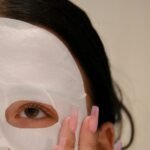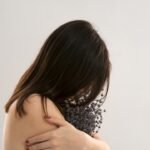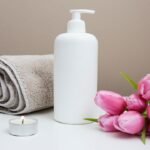In the realm of makeup application, primer serves as the essential first step that lays the groundwork for a flawless finish. This often-overlooked product creates a smooth canvas for foundation, helping to fill in fine lines and pores while enhancing the longevity of makeup. Primers come in various formulations, including mattifying, hydrating, and illuminating options, each tailored to address specific skin concerns.
For instance, individuals with oily skin may benefit from a mattifying primer that controls shine throughout the day, while those with dry skin might prefer a hydrating primer that adds moisture and radiance. The application of primer is straightforward yet crucial. A pea-sized amount is typically sufficient; it should be gently massaged into the skin using fingers or a makeup sponge.
This not only ensures even distribution but also allows the product to meld seamlessly with the skin. The result is a smoother texture that helps foundation glide on effortlessly, reducing the likelihood of patchiness or uneven coverage. Moreover, many modern primers are infused with skincare ingredients, providing additional benefits such as hydration or sun protection, making them a multifunctional addition to any makeup routine.
Foundation
Foundation is often considered the cornerstone of any makeup look, as it provides the base upon which all other products are layered. Available in various forms—liquid, cream, powder, and stick—foundation caters to diverse preferences and skin types. Liquid foundations are particularly popular due to their versatility; they can offer sheer to full coverage depending on how they are applied.
For example, a damp makeup sponge can create a natural finish, while a brush can yield a more polished look. Choosing the right foundation shade is paramount for achieving a seamless appearance. It’s advisable to test shades in natural light to ensure an accurate match with one’s skin tone.
Additionally, understanding one’s skin type can guide the selection process; for instance, those with oily skin may opt for a matte finish foundation that controls shine, while individuals with dry skin might prefer a dewy finish that imparts a healthy glow. The application technique also plays a significant role in the overall effect; stippling or buffing motions can enhance coverage and blendability, ensuring that the foundation looks like second skin rather than a mask.
Concealer
Concealer is an indispensable tool in the makeup arsenal, designed to address specific imperfections such as dark circles, blemishes, and redness. Unlike foundation, which provides an overall evenness to the complexion, concealer is typically thicker and more pigmented, allowing it to effectively camouflage targeted areas. The formulation of concealers varies widely; some are creamy and hydrating, while others are matte and long-wearing.
Selecting the right type depends on the area being treated; for instance, a lightweight, hydrating concealer is ideal for the delicate under-eye area, while a more robust formula may be necessary for covering blemishes. Application techniques for concealer can significantly influence its effectiveness. A small brush or fingertip can be used to dab concealer onto problem areas, followed by gentle tapping to blend it seamlessly into the surrounding skin.
For under-eye circles, a triangular application extending from the inner corner of the eye down towards the cheek can create an uplifting effect while brightening the area. Setting concealer with a light dusting of powder can help prevent creasing and ensure longevity throughout the day.
Setting powder
Setting powder is a crucial component in achieving a long-lasting makeup look, particularly for those prone to oiliness or shine. This fine powder is designed to lock in foundation and concealer, preventing them from settling into fine lines or fading over time. Available in translucent and tinted varieties, setting powders can cater to different skin tones and preferences.
Translucent powders are particularly versatile as they work across various complexions without altering the foundation shade. The application of setting powder should be approached with care to avoid a cakey appearance. A fluffy brush or a damp sponge can be used to apply powder lightly over areas where shine tends to occur, such as the T-zone (forehead, nose, and chin).
For those with dry skin, it’s advisable to use setting powder sparingly and focus on areas that require it most. Conversely, individuals with oily skin may benefit from a more generous application to ensure their makeup remains intact throughout the day. The result is a matte finish that enhances the overall look while providing a barrier against environmental factors.
Eyebrow pencil or powder
Eyebrows frame the face and play a pivotal role in defining one’s overall appearance. The choice between eyebrow pencil and powder often comes down to personal preference and desired effect. Pencils typically offer precision and control, making them ideal for filling in sparse areas or creating defined shapes.
On the other hand, powders provide a softer finish that can create a more natural look, especially when applied with an angled brush. When using an eyebrow pencil, it’s essential to select a shade that closely matches one’s natural brow color for authenticity. Light strokes should be employed to mimic hair-like textures, filling in gaps without creating harsh lines.
For those opting for powder, using an eyebrow brush to apply product in short strokes can achieve a soft gradient effect that enhances fullness without appearing overly done. Additionally, setting brow gel can be applied afterward to keep hairs in place and maintain the desired shape throughout the day.
Neutral eyeshadow palette
A neutral eyeshadow palette is an essential staple in any makeup collection due to its versatility and ability to create various looks suitable for any occasion. These palettes typically feature shades ranging from soft creams and taupes to deeper browns and blacks, allowing for seamless blending and layering. The beauty of neutral shades lies in their adaptability; they can be used for everyday wear or dressed up for evening events by simply intensifying certain colors or adding shimmer.
When applying eyeshadow from a neutral palette, it’s beneficial to start with a transition shade that closely matches one’s skin tone. This shade should be blended into the crease using a fluffy brush to create depth and dimension. Following this step, darker shades can be applied along the outer corners of the eyes for added drama or definition.
Highlighting shades can be used on the brow bone and inner corners to brighten the eyes and create an open appearance. The versatility of neutral palettes allows for endless combinations, making them ideal for both beginners and seasoned makeup enthusiasts alike.
Eyeliner
Eyeliner is a transformative product that can dramatically alter the shape and definition of the eyes. Available in various forms—pencil, gel, liquid—each type offers unique benefits suited to different styles and preferences. Pencil eyeliners are often favored for their ease of use and portability; they can be applied quickly for a soft line or built up for more intensity.
Gel liners provide long-lasting wear with rich pigmentation, while liquid liners are perfect for creating bold looks such as winged eyeliner. When applying eyeliner, precision is key. For those new to eyeliner application, starting with pencil liner can provide more control; it’s advisable to begin at the inner corner of the eye and work outward in small strokes.
Gel liners can be applied with an angled brush for added precision, allowing for varied thickness depending on desired style. Liquid liners require a steady hand but can create striking looks when mastered; practicing on the back of one’s hand can help build confidence before applying directly on the eyelid.
Mascara
Mascara is often regarded as one of the most impactful makeup products due to its ability to enhance lashes and open up the eyes dramatically. Available in various formulations—lengthening, volumizing, waterproof—mascara caters to different lash needs and preferences. Lengthening formulas typically contain fibers that cling to lashes, creating an illusion of added length without clumping.
Volumizing mascaras focus on thickening each lash for a fuller appearance. The application of mascara requires technique for optimal results. Starting at the base of the lashes and wiggling the wand upward helps ensure even coverage while preventing clumping.
For added drama, multiple coats can be applied; however, it’s essential to allow each layer to dry slightly before adding more product to avoid excessive buildup. Additionally, using an eyelash curler prior to mascara application can enhance curl and lift, further amplifying the eyes’ impact.
Blush
Blush adds a healthy flush of color to the cheeks, bringing life and dimension to the face. Available in various formulations—powder, cream, liquid—blush can cater to different skin types and desired finishes. Powder blushes are often favored for their ease of application and blendability; they work well on oily skin types due to their matte finish.
Cream blushes provide a dewy glow that can enhance dry skin types by imparting hydration. When applying blush, it’s important to consider face shape and desired effect. For a natural look, blush should be applied on the apples of the cheeks and blended back towards the temples using circular motions.
This technique creates a youthful appearance reminiscent of natural flushes from exercise or excitement. For those seeking more definition or contouring effects, applying blush slightly higher on the cheekbones can create an elevated look that enhances facial structure.
Lipstick or lip gloss
Lipstick or lip gloss serves as the finishing touch in any makeup routine, offering color and definition that can transform an entire look. Lipsticks come in various finishes—matte, satin, glossy—each providing different effects on the lips. Matte lipsticks offer long-lasting wear with intense pigmentation but may require careful application due to their tendency to emphasize dryness or texture on the lips.
Satin finishes provide hydration while maintaining color intensity, making them suitable for everyday wear. When choosing between lipstick and lip gloss, personal preference plays a significant role; some may prefer the boldness of lipstick while others enjoy the shine of gloss. Application techniques vary; lipsticks are often best applied directly from the bullet or with a lip brush for precision, while glosses can be applied directly from the applicator for ease of use.
To enhance longevity and prevent feathering, lining lips with a matching lip liner before applying lipstick or gloss can create clean edges and define shape.
Setting spray
Setting spray is an essential final step in any makeup routine designed to lock everything in place while enhancing longevity throughout the day. These sprays come in various formulations—matte-finish sprays help control shine while dewy-finish sprays impart hydration and glow—allowing users to select based on their desired finish and skin type. The application process is simple; after completing makeup application, holding the spray at arm’s length and misting over the face ensures even distribution without disturbing makeup.
In addition to prolonging wear time, setting sprays can also help meld layers together for a more cohesive appearance. This is particularly beneficial when using multiple products across different textures; setting spray acts as a unifying agent that softens any harsh lines created during application. Furthermore, many modern setting sprays contain skincare ingredients that provide additional benefits such as hydration or oil control throughout wear time.
Incorporating these products into your makeup routine not only enhances your overall look but also allows you to express your creativity through various techniques and styles tailored specifically for you.
FAQs
What are the essential makeup products for a professional look?
The essential makeup products for a professional look include foundation, concealer, powder, neutral eyeshadow palette, black or brown eyeliner, mascara, blush, bronzer, and a nude or neutral lipstick.
Why is foundation important for a professional makeup look?
Foundation helps to even out the skin tone and create a smooth base for the rest of the makeup. It can also help to cover any blemishes or imperfections for a polished appearance.
What is the purpose of using concealer in a professional makeup look?
Concealer is used to cover dark circles, blemishes, and any other imperfections on the skin. It helps to create a flawless complexion for a professional appearance.
Why is it important to use neutral eyeshadow for a professional makeup look?
Neutral eyeshadow shades are versatile and can be used to create a subtle, professional eye makeup look. They are suitable for a professional setting and can be easily blended for a polished finish.
How can mascara enhance a professional makeup look?
Mascara helps to define and lengthen the eyelashes, making the eyes appear more awake and polished. It can also help to frame the eyes and complete the overall makeup look.
Why is a nude or neutral lipstick recommended for a professional makeup look?
A nude or neutral lipstick complements a professional look by providing a subtle and polished finish to the lips. It is suitable for a professional setting and can be easily paired with different makeup looks.









